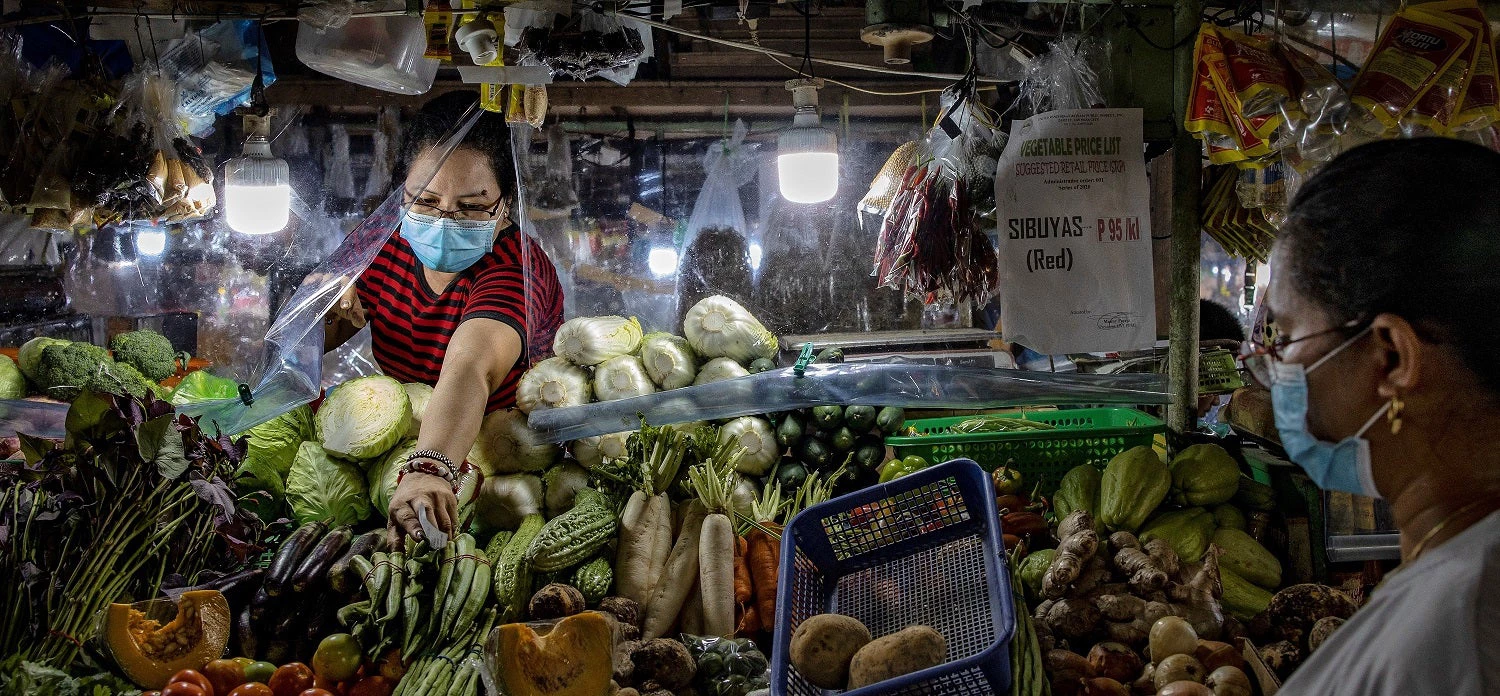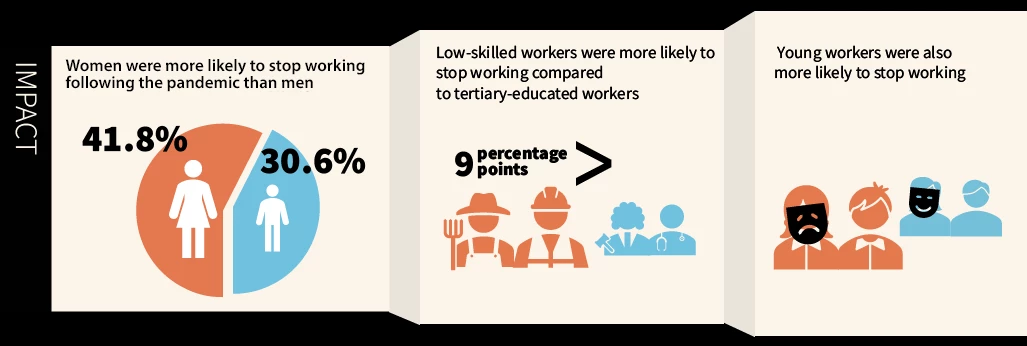 Une commerçante dans un marché à Las Pinas (Grand Manille), aux Philippines. Photo : © Banque mondiale
Une commerçante dans un marché à Las Pinas (Grand Manille), aux Philippines. Photo : © Banque mondiale
The past year has been one of the toughest in recent history, due to the harsh health, economic, and social impacts of the COVID-19 crisis. The impacts have been felt everywhere, with no country spared. Yet, they have not been felt the same way by everyone.
Women, young and less-educated workers – groups that were likely at a disadvantage in the labor market even before the shock – were more likely to lose their job in the immediate aftermath of the pandemic. This is the main finding of our recent study using data collected at the onset of the crisis in 34 mostly low and middle-income countries around the world, which account for a combined population of almost 1.4 billion. Relative to men, women were 11 percentage points more likely to have lost their job ; a similar gap was found between tertiary-educated workers and those with primary education or less. Young and older workers also bore the brunt of the pandemic’s jobs impact, compared to prime-age workers.

While many developing countries deployed emergency social transfers to try to mitigate the negative welfare impact of the pandemic, these have not been enough to offset the pandemic’s impact. For instance, low-income countries spent about $6 per person on COVID-19-related social protection, while lower middle-income countries spent an average of $26 per head. As a result, job losses translated into income losses for two-thirds of households on average – more severe for households with women, young and less-educated workers – and deprived many of even the most basic needs.
The evidence from the study shows that, on average, 15.3 percent of people interviewed saw one or more adults in their household going without eating for a whole day because of lack of resources, and this was higher in households who were affected by jobs and income losses. This resonates with global estimates suggesting that between 119 and 124 million people were pushed into poverty in 2020, reverting years of hard-earned gains.
One of the most unfortunate and potentially most damaging effects of this crisis will however only be visible in the longer run: The impacts of the widespread and unprecedented disruption in learning. As schools around the world closed to contain the spread of the virus, a whopping 1.6 billion of children saw their education disrupted. The disruptions have been most severe in countries with the lowest human capital index to begin with, widening the gap with richer countries. Within countries too, the most disadvantaged children – children in rural areas in low-income households with little-educated parents – were most effected by the learning disruptions. The magnitude of this effect is substantial and could put many children, especially those from disadvantaged backgrounds, on a more unfavorable path throughout their life.
Across countries, as vaccines are being rolled out and prospects for economic growth point to some recovery this year, we are starting to finally see some light at the end of the tunnel. However, in the same way that impacts of the pandemic have been uneven, the recovery risks being uneven as well. The evidence from the World Bank’s high-frequency surveys used for the study shows that, once more, women, little-educated workers, and young workers are returning to work at a slower pace than other groups.
Our study also shows that the pandemic’s effects have been most unequal in countries where pre-existing inequalities were greatest – where access to such key opportunities as basic education, clean water, and electricity are largely determined by circumstances such as location, parental background, and household wealth. In these countries, the pandemic risks further cementing inequality of opportunity unless swift action is taken.
The crisis provides a reform opportunity to, once and for all, address the barriers to equal opportunities that existed pre-crisis (in access to learning, health, good jobs, child care services, and others), and that have made some groups more vulnerable. While policy efforts should not lose sight of mitigating the short-term negative impacts of the pandemic on the most disadvantaged households and workers, they can also work on fostering an inclusive recovery and strengthening people’s resilience to future shocks through better access to opportunities for all. It’s an opportunity we cannot afford to miss.



Join the Conversation